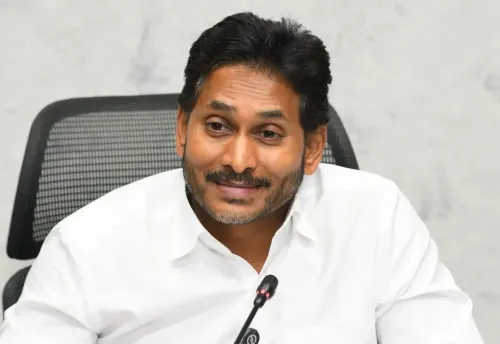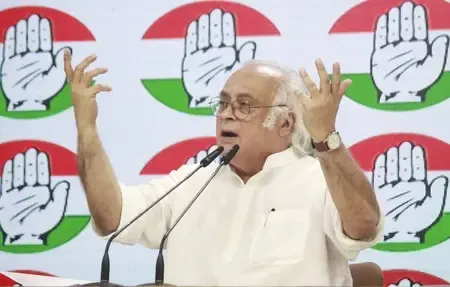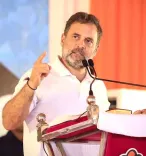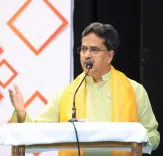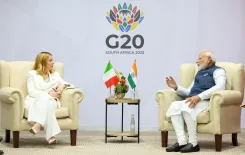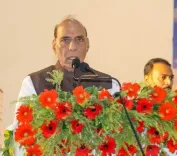FairPoint: Are Kashmir's Leaders Igniting the Flames They Now Hold Delhi Accountable For?
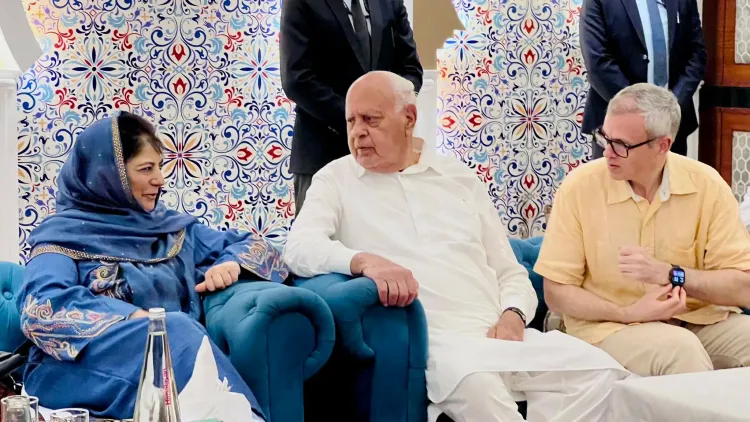
Synopsis
Key Takeaways
- Kashmir's leadership has failed to unite its people.
- The duality in political messaging has deepened divisions.
- Radicalization remains a significant concern among local youth.
- The abrogation of Article 370 has not changed entrenched mindsets.
- Political leaders must be held accountable for perpetuating grievances.
New Delhi, Nov 23 (NationPress) Recently, Jammu and Kashmir Chief Minister Omar Abdullah expressed concern that a perception was being formed nationwide, suggesting that all Kashmiris were implicated in recent events in Delhi.
He further stated that "it feels like a crime to drive a vehicle with a Jammu and Kashmir registration number." His remarks reflected not just personal distress but seemed to be a calculated effort to emphasize the rift mainstream Kashmiri politicians have relied on for their importance.
While Omar Abdullah was measured in his criticism, People's Democratic Party chief and former Chief Minister Mehbooba Mufti took a more aggressive stance. She blamed the Central government for fostering a "poisonous atmosphere," which she claimed contributed to a blast near the Red Fort.
During a public gathering in Srinagar, she asserted that the Centre's policies had led Kashmiri youth down a "dangerous path".
Mufti's remarks were clear: "These people say that everything is fine in Kashmir," she noted, "but the issues of Kashmir were manifested in front of the Red Fort in Delhi."
Such statements from influential leaders may astonish those unfamiliar with the Valley's political landscape. Yet, these comments are neither spontaneous nor isolated. For decades, a faction of Kashmir's political elite has thrived on duality—communicating one message to Delhi while relaying another to the Valley. This duplicity has occasionally morphed into overtly provocative rhetoric, sometimes bordering on anti-nationalism. This is the deeper tragedy of Kashmir: leaders who have influenced the region's fate have seldom made attempts to close divides; rather, they have often deepened them.
It is an uncomfortable yet undeniable reality that the enduring psychological divide—"us versus them," or the notion that India starts only beyond the Banihal tunnel—persists in the Valley.
The revocation of Article 370 in 2019 did not change this outlook. It couldn’t, as Kashmiri political, religious, and social influencers have never genuinely sought to dismantle such divisive mindsets. If anything, they have perpetuated it in various forms and tones, depending on political necessity.
This pattern traces back to the foundational years of Independent India. When Sheikh Abdullah negotiated Kashmir's relationship with India in 1947, he secured considerable autonomy, a deal that shaped the Valley's politics for generations.
The partnership established with Jawaharlal Nehru, a fellow Kashmiri and India's first Prime Minister, sowed the seeds of separatist politics. It introduced a political framework that fostered a sense of distinction rather than unity.
Over time, this autonomy adapted into a narrative of separateness, ultimately creating fertile ground for separatist politics. What began as political autonomy gradually evolved into a narrative of difference, a narrative that numerous leaders cultivated and exploited over subsequent decades.
By the early 1970s, this narrative transcended mere political theatrics. In 1971, a Kashmiri separatist group hijacked an Indian Airlines Fokker F27 aircraft named 'Ganga' to Lahore, where it was eventually destroyed.
The hijackers were associated with the National Liberation Front, a group that later morphed into the Jammu and Kashmir Liberation Front (JKLF). This event served as a precursor to the violence that would later envelop the Valley, signaling the trajectory of Kashmir’s politics.
However, it was the late 1980s that marked a significant turning point. What began as political disenchantment erupted into full-scale terrorism, enabled and weaponized by Pakistan. Yet, separatism in Kashmir has seldom been about the aspiration for an independent homeland. Its ideological foundation has been entrenched in religious extremism—the ambition to establish an Islamic Kashmir and fulfill Pakistan's "unfinished agenda of partition".
Since 1989, terrorism in the Valley has pursued two explicit goals: to forcibly expel Hindus and seize their properties, and to establish an Islamist regime.
Regrettably, both objectives have nearly been accomplished. The ethnic cleansing of Kashmiri Pandits remains one of the darkest chapters in modern Indian history. The demographic reality of the Valley has changed little even after the abrogation of Article 370; few displaced families have returned.
In recent years, the Valley has seen infrastructural advancements, a resurgence in tourism, and enhanced security. However, the April 22 Pahalgam attack once again revealed the underlying turmoil.
Shockingly, many of the assailants were local youths. Now, the same young individuals who once operated within the Valley are now infiltrating the plains of India, attempting to create chaos there as well.
The involvement of local youths underscores how deeply radicalization continues to simmer below the surface. The shock intensified when one of the attackers, Dr. Umar Muhammad, released a disturbing video before detonating himself near the Red Fort. Here was a young, educated doctor—financially secure—justifying suicide bombing as a religious virtue. He was not a product of poverty or deprivation. Yet, he fell prey to radicalization—a stark indication of how profoundly extremist narratives have permeated the Valley’s social fabric. He was a product of ideological indoctrination.
This raises a crucial question: why have the political and religious leaders who vocally criticize the Centre not taken steps to counter the radical and extremist narratives gaining traction among Kashmiri youth? Instead of confronting these ideologies, many leaders amplify feelings of alienation and resentment. Instead of fostering reform, they exacerbate divides for political gain.
Kashmir is in dire straits, and its political, religious, and social leadership bears the brunt of the blame. For decades, they have failed to dismantle the psychological barrier of the Banihal tunnel.
Rather than mending the divide, they have nurtured it—sometimes for relevance, at other times for electoral advantage, and occasionally for sheer political expediency. They have ignited division when healing was essential, exploited fear when clarity was needed, and perpetuated grievances when accountability was crucial.
What Kashmir faces today is not solely a security concern. It is the cumulative result of years of deception, duplicity, and ineffective leadership, be it political or religious.
(Deepika Bhan can be contacted at deepika.b@ians.in)

